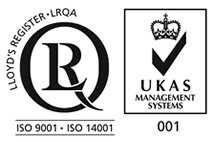
Main Products
Copyright 1998-2025 Firmetal Group All Rights Reserved. | Sitemap
Before hydrogenation of niobium ingots, the surface should first be cleaned with a mixed aqueous solution of hydrofluoric acid and nitric acid. Then, they should be placed in a furnace, evacuated, and filled with hydrogen at a pressure of 0.01-0.02MPa to heat up to 500-700 degrees Celsius, and then cooled to room temperature. After several repetitions, the hydrogen content of niobium ingots should reach more than 1%. If the hydrogen pressure is increased, the hydrogenation effect will be better, but the pressure resistance of the furnace body needs to be enhanced. If the pressure is too low, the hydrogenation cycle will be too long. Niobium ingots that have undergone hydrogenation treatment can be conveniently crushed into powders of various particle sizes.
According to the predetermined composition and proportion of niobium alloy, niobium powder can be uniformly mixed with one or more powders of titanium, tantalum, zirconium and hafnium, and then pressed into electrodes of the required size. It can be formed by compression molding or isostatic pressing. The pressure is 166-392MPa.
The pressed electrodes need to be sintered. The sintering process is divided into two stages: low-temperature dehydrogenation and high-temperature sintering, which are carried out in a vacuum furnace. The initial stage of sintering is the dehydrogenation phase. As the temperature rises, the hydrides decompose into new ecological metals, and the metal surface is fresh and highly active. After dehydrogenation, high-temperature sintering is carried out. During high-temperature sintering, these highly active metals tend to diffuse with each other to form various solid solutions with lower melting points. This is conducive to eliminating non-melting lumps of high-melting-point metals in the ingot after smelting and improving uniformity.
The niobium-based alloy produced by the manufacturing process has a uniform composition and can basically eliminate the non-melting blocks of high-melting-point metals. For 30 kilograms of Nb-50Ti alloy that has been smelted in an electric arc furnace at one time, the fluctuation range of titanium is 1-1.5% by weight. The fluctuation range of titanium in alloy ingots that have been smelted twice in electric arc furnaces is less than 1% by weight. The micro-region composition analysis of the alloy shows that the fluctuation range of titanium is 2.5-4.6% by weight. This alloy fully meets the requirements for the production of composite superconducting wires, and is particularly suitable for the production of composite superconducting wires with core diameters less than 10 microns and those used in magnets that require high magnetic field uniformity.